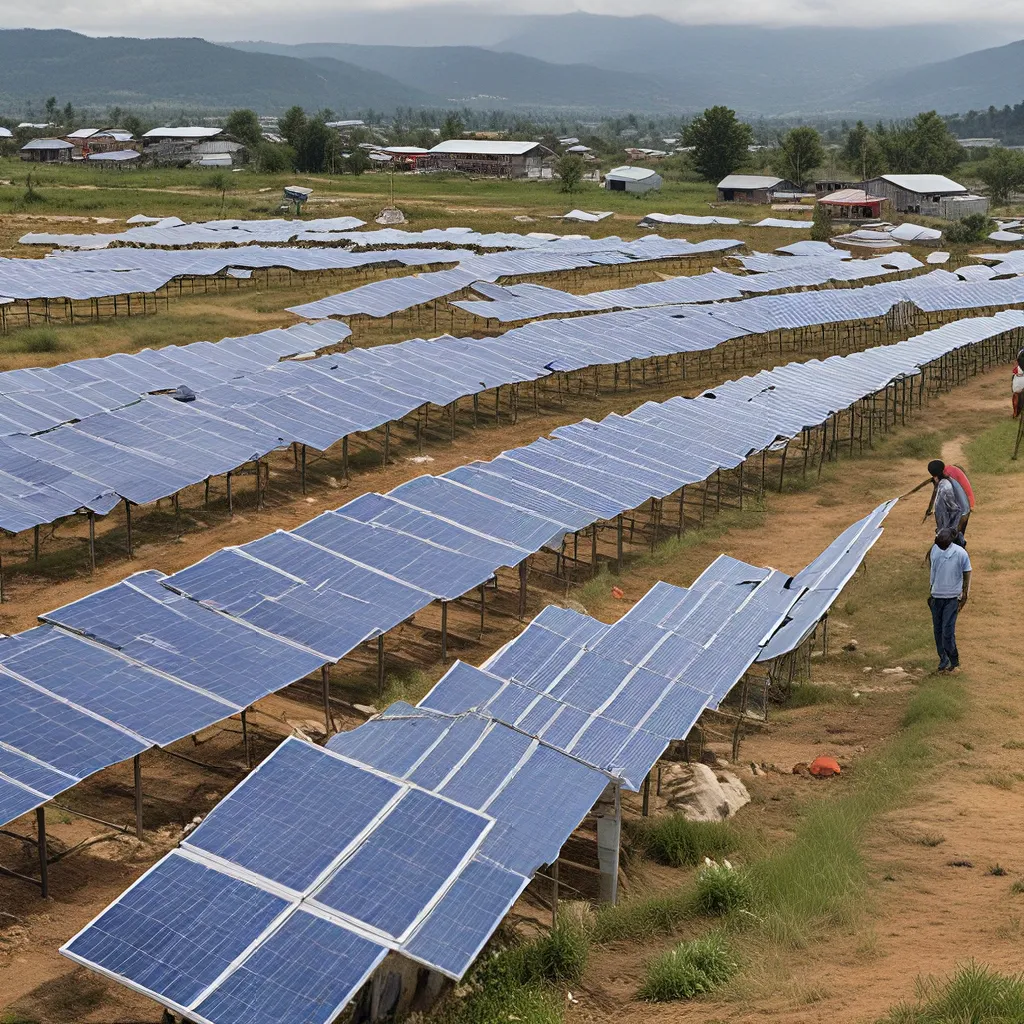
Powering Through the Storm: How Renewable Energy is Fortifying Our Communities
It was a dark and stormy night. Well, not literally – I’m actually writing this on a sunny afternoon. But the sentiment holds true. Extreme weather events fueled by climate change have been wreaking havoc across the country, leaving countless communities in the dark, quite literally.
As I sit here sipping my coffee, my mind can’t help but wander to the plight of those who have lost power during these increasingly frequent storms. The single mom trying to keep her kids fed and warm. The elderly couple relying on medical equipment. The small business owner watching their inventory spoil. These are the faces of disaster resilience – or the lack thereof.
But there’s hope on the horizon. A growing number of communities are discovering the power of renewable energy to weather the storm. And I’m not just talking about flashy solar panels or the latest battery storage tech (although those are pretty cool). No, I’m talking about a fundamental shift in the way we approach energy infrastructure and community preparedness.
Shining a Light on Community Resilience
The U.S. Department of Energy (DOE) recently announced a $43 million investment to help communities across the country plan their transition to a clean energy future and improve grid reliability and security. These critical projects will empower local leaders to understand their energy needs, harness their own renewable resources, and build resilient systems that can withstand the ravages of Mother Nature.
But why is this so important? Well, as the Biden-Harris Administration has highlighted, power outages caused by extreme weather events can have disastrous effects, shutting down critical services like water, energy, communications, and transportation. And as the Clean Coalition points out, these disruptions can have a devastating impact on the most vulnerable members of our communities.
But here’s the thing – renewable energy isn’t just about saving the planet (although that’s a pretty noble goal). It’s about empowering communities to take control of their energy future and fortifying their resilience against the ravages of extreme weather. And that’s exactly what these DOE-funded projects are aiming to do.
Energizing the Future: Community-Driven Clean Power Solutions
Imagine a world where every neighborhood had its own solar-powered microgrid, capable of keeping the lights on even when the larger grid goes down. Or a town that could tap into its abundant wind resources to power critical infrastructure during a prolonged outage. These aren’t just pipe dreams – they’re the kind of real-world solutions that these DOE projects are working to develop and deploy.
The Renewables Advancing Community Energy Resilience (RACER) program, for example, is funding 20 innovative projects that will help communities across the country utilize solar and solar-plus-storage solutions to prevent power disruptions and rapidly restore electricity after an outage. These projects span over 30 diverse communities, from California to Puerto Rico, and involve a wide range of partners, including local and state governments, national labs, universities, and nonprofit organizations.
But it’s not just about the hardware. The Energyshed funding program is also working to build data-driven tools that will empower communities to better understand their energy landscape and make informed decisions about their own clean energy future. By shining a light on current and future energy supply and demand, these tools will give local leaders the power to shape their community’s energy resilience in a way that truly reflects their unique needs and priorities.
Connecting the Dots: Renewable Energy and Disaster Resilience
Now, I know what you’re thinking: “Renewable energy is great and all, but how does it really help with disaster resilience?” Well, my friend, let me break it down for you.
Reliable Power: When the grid goes down, solar-powered microgrids and energy storage systems can keep the lights on and the critical infrastructure running. No more scrambling for flashlights and huddling around the gas stove.
Rapid Recovery: With renewable energy systems in place, communities can bounce back from outages much faster. Instead of waiting days or weeks for the grid to be repaired, they can quickly restore power and get back on their feet.
Sustainable Solutions: By investing in renewable energy, communities are not only building resilience against extreme weather, but they’re also taking a big step towards a more sustainable future. It’s a win-win for both the planet and the people.
And let’s not forget the financial benefits. Renewable energy products can help families and businesses save on their energy bills, freeing up resources that can be directed towards disaster preparedness and recovery efforts.
Powering a Brighter Future: The Renewable Energy Revolution
As I wrap up this article, I can’t help but feel a sense of excitement for the future. The renewable energy revolution is well underway, and communities across the country are leading the charge. By harnessing the power of the sun, the wind, and the earth, we’re not only saving the planet, but we’re also strengthening the very fabric of our society.
So, the next time a storm rolls in and the lights go out, take a moment to look around your neighborhood. See the solar panels on the rooftops, the wind turbines dotting the horizon, and the resilient energy systems humming quietly in the background. These are the signs of a future where clean power and disaster resilience go hand-in-hand, creating a brighter, more secure tomorrow for all.